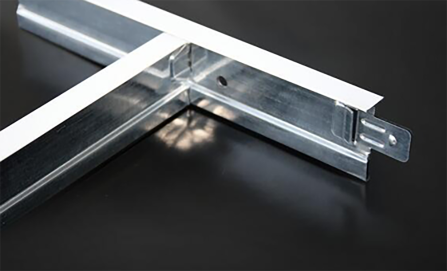Dec . 04, 2024 05:38 Back to list
Exploring T-Bar Suspension Systems for Ceiling Grid Installations and Their Benefits
Understanding T-Bar Suspended Ceiling Grid Systems
Suspended ceiling grids, particularly T-bar systems, have become increasingly popular in various commercial and residential construction projects. This innovative design not only enhances the aesthetics of a space but also provides several functional benefits. In this article, we’ll explore the features, advantages, and installation processes associated with T-bar suspended ceiling grids.
What is a T-Bar Suspended Ceiling Grid?
A T-bar suspended ceiling grid system consists of a network of metal grids that support ceiling panels below the original ceiling. The T-bar refers to the shape of the support beams, which resemble a “T” when viewed in cross-section. These grids are typically composed of lightweight materials, like steel or aluminum, which makes them easy to handle while ensuring adequate strength and durability.
The grid system provides a framework for placing ceiling tiles or panels that can be made from various materials, such as mineral fiber, acoustical tiles, or vinyl. This flexibility in panel choice allows architects and builders to customize ceilings based on aesthetic preferences and functional requirements.
Key Benefits of T-Bar Suspended Ceiling Grids
1. Aesthetic Appeal T-bar ceilings can significantly enhance the visual interest of a room. By choosing different tile designs and finishes, it's easy to create a modern, sleek look or opt for a more traditional feel, depending on the interior design.
2. Acoustic Control Many ceiling tiles are designed with sound-absorption characteristics. This helps minimize noise pollution in office environments or other spaces where quiet is essential. Installing a T-bar grid with the right panels can significantly improve the acoustics of a room.
3. Access to Utilities The space between the original ceiling and the suspended ceiling allows easy access to plumbing, electrical, and HVAC systems. This feature facilitates maintenance without the need to disrupt the entire ceiling, making repairs and modifications simpler and less costly.
4. Energy Efficiency The use of energy-efficient lighting fixtures can easily be integrated into T-bar ceilings, enhancing illumination and reducing energy costs. Additionally, the insulation properties of certain ceiling panels can contribute to better temperature regulation in a space.
t bar suspended ceiling grid

5. Flexibility and Modularity T-bar ceilings are highly modular. If there is a need to change the layout or make adjustments in the future, removing and replacing panels is straightforward. This adaptability makes T-bar ceilings a long-term investment for properties.
Installation Process
Installing a T-bar suspended ceiling grid is a task that can be carried out by professionals or skilled DIY enthusiasts. Here's a brief overview of the process
1. Planning and Measurements Start by measuring the dimensions of the room and determining the desired height of the ceiling. Planning the layout of the grid and deciding the placement of ceiling tiles is crucial for a successful installation.
2. Marking the Layout Use a chalk line to mark the grid layout on the walls. This serves as a guide for where the T-bars will be placed.
3. Hanging the Main Members Secure the main runners (the longer horizontal rails) to the ceiling using suspension wires or hooks, ensuring they are level.
4. Installing Cross Tees Insert the cross tees into the main runners to complete the grid pattern. Make sure each connection is sturdy for maximum support.
5. Placing Ceiling Tiles Finally, insert the chosen ceiling tiles into the grid. Ensure they fit snugly and secure them if necessary.
Conclusion
T-bar suspended ceiling grid systems offer a practical and stylish solution for various building needs. With their aesthetic versatility, functional benefits, and ease of installation, it's easy to see why they have become a favored choice among architects, builders, and homeowners alike. Whether you’re renovating an office, enhancing a retail space, or designating areas in a home, T-bar ceilings can provide both form and function, making them an excellent option for modern construction projects.
-
Durable Ceiling T Grid Systems | Easy InstallationNewsAug.29,2025
-
PVC Gypsum Ceiling: Durable, Laminated Tiles for Modern SpacesNewsAug.28,2025
-
Pvc Gypsum Ceiling Is DurableNewsAug.21,2025
-
Mineral Fiber Board Is DurableNewsAug.21,2025
-
Ceiling Tile Clip Reusable DesignNewsAug.21,2025
-
Ceiling T Grid Modular DesignNewsAug.21,2025







